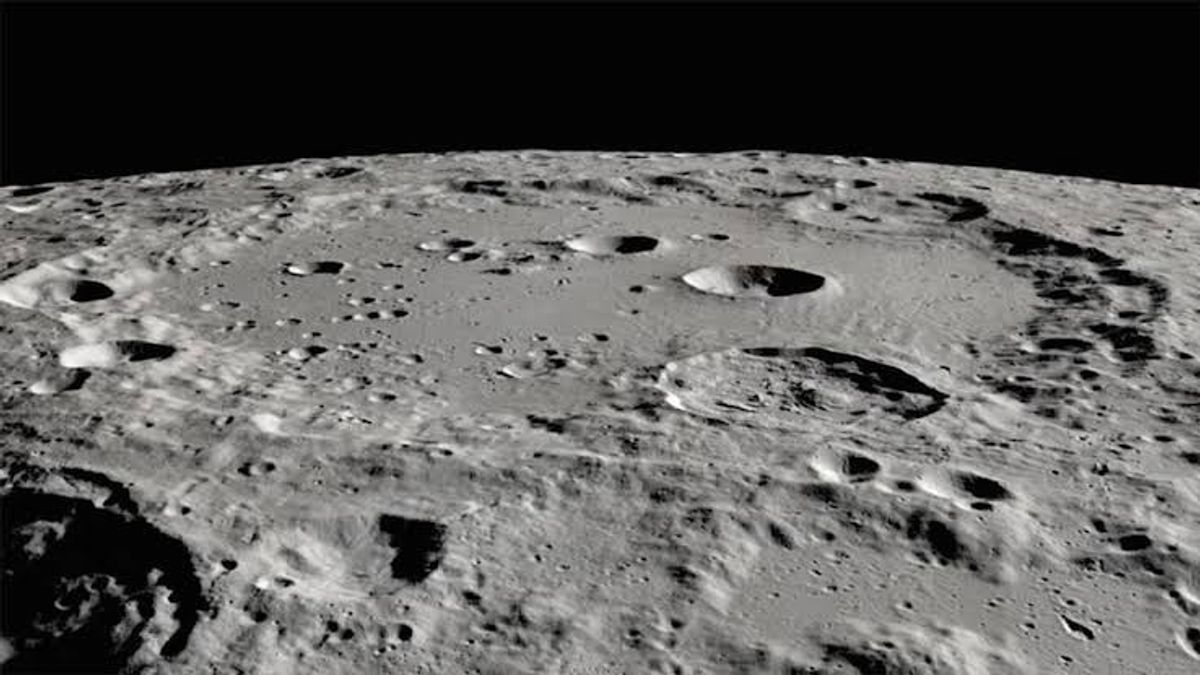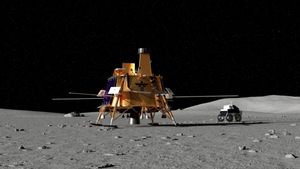JAKARTA - China has made history again by successfully finding water on the Moon. The discovery was made by the Chang'e 5 lander while at its live landing site.
According to reports, Chang'e 5 discovered water at its landing site near Oceanus Procellarum on the near side of the Moon, using water-detecting instruments to determine spectral reflectance measurements of regolith (soil) and rock.
However, water was actually first detected on the Moon from orbit (rather than directly), by India's Chandrayaan-1 mission using NASA's Moon Mineralogy Mapper instrument, following several previous tentative detections by other missions and telescopes.
The Chandrayaan-1 finding was announced in September 2009, and water has since been extensively mapped from orbit by missions such as NASA's Lunar Reconnaissance Orbiter, which has been operating on the Moon since 2009.
However, only Chang'e 5 has found water directly there; no previous lunar mission has found water directly on the Moon's surface. Apollo astronauts in the 1970s actually brought home samples containing water, but they were not detected until decades later in the laboratory, after the equipment was repaired.

How did Chang'e 5 Find Water on the Moon?
The water has the spectral characteristics one would expect to see in measurements from Chang'e 5's lunar mineralogy spectrometer, which is designed to search for water. However, the lander faced intense heat on the Moon's surface, resulting in blurring of measurements.
Not giving up, the Chinese researchers used a thermal correction model to account for heat and then saw the watermark appear at 2.85 micrometers. Not much water was found, around 120 parts per million in regolith and 180 parts per million in light rock.
The results, confirmed with lunar regolith samples that Chang'e 5 returned to Earth in December 2020, making it the first probe to bring back material from the Moon since Luna 24 in 1976. And now there is evidence of water on the Moon.
"This (water proportion) is consistent with the initial analysis of the returned Chang'e 5 samples," the researchers said in an official statement quoted from Space, Thursday, January 13.
Surface water is associated with deposition from the solar wind, which is a constant flow of charged particles emanating from the Sun. Analyzing the rock composition and comparing it to remote sensing from orbit indicated that the rock may have been excavated from an older basaltic unit and ejected to the Chang'e 5 landing site.
"Therefore, the lower water content of the soil, compared to the higher water content of the rock fragments, indicates that degassing of the mantle reservoir beneath the Chang'e 5 landing site occurred," the researchers said.
The discovery of the surface waters is also thought to have been brought about by a volcanic eruption in the Procellarum region, which brought potassium, rare earth elements and phosphorus, a combination of ingredients for the abbreviation KREEP.
For your information, the new Chang'e 5 study was co-led by researchers Honglei Lin and Yangtin Lin of the Institute of Geology and Geophysics at the Chinese Academy of Sciences. The peer-reviewed research was published in the journal Science Advances on Friday, January 7th.
China has launched several successful missions to the Moon in recent years, including Chang'e 4, which passed 1,000 days on the far side of the Moon (the first mission to land there) in November 2020. The country plans to send Chang'e 6 to collect samples from the far side of the Moon by 2024.
The English, Chinese, Japanese, Arabic, and French versions are automatically generated by the AI. So there may still be inaccuracies in translating, please always see Indonesian as our main language. (system supported by DigitalSiber.id)













